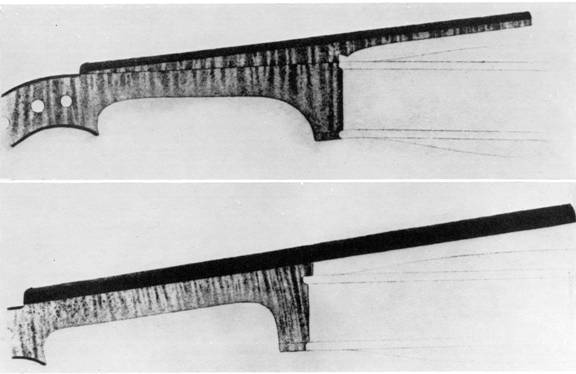- Home
- About
- About SCMS
- Directors
- Artists
- Vera Beths
- Steven Dann
- Marc Destrubé
- James Dunham
- Mark Fewer
- Eric Hoeprich
- Christopher Krueger
- Myron Lutzke
- Marilyn McDonald
- Douglas McNabney
- Mitzi Meyerson
- Pedja Muzijevic
- Anca Nicolau
- Jacques Ogg
- Loretta O'Sullivan
- Lambert Orkis
- Paolo Pandolfo
- William Purvis
- Marc Schachman
- Jaap Schröder
- Andrew Schwartz
- William Sharp
- Ian Swensen
- Lucy van Dael
- Ensembles
- Concerts
- The Collection
- Recordings
- Education
- Donate
Violin from the shop of Amati, ca. 1670
This beautiful violin bears a label identifying it as the work of Nicolò Amati, the son of Hieronymus and nephew of Antonio Amati, who are known as “the brothers Amati” [Nicolaus Amatus Cremonen. Hieronymi Fil. ac Antonij Nepos Fecit 1670]. However, no recent expert has been willing to pronounce it as the work of Nicolò. The majority opinion is that, while it was certainly made “in the shop of Amati,” it is almost surely the work of one of his many apprentices, quite possibly Francesco Rugieri, who is known to have placed Amati labels over his own on instruments as early as 1685, the year after Nicolò’s death, in an effort to increase their value.
The instrument was donated to the Smithsonian in 1976 by Ross McCollum, and shortly after selected for re-conversion to its original “baroque” state. (Beginning very late in the eighteenth century, and continuing through the next century, the fittings on the vast majority of violins, violas, and celli—including their necks, fingerboards, and tailpieces as well as their internal structural bass bars and soundposts—were changed in order to bring more tension to bear on the instruments, causing their voices to become louder, darker, and more focused, yet curiously less naturally resonant. These changes in instrument set-up also engendered changes in playing styles, as did, around the same period, changes in shapes of bows, and, in the early decades of the twentieth century, the gradual shift away from gut strings.) The side detail of the “Amati/Rugieri” clearly shows its “baroque” neck and short fingerboard, which are well complemented by the “baroque” bridge and gut strings shown in the other detail.

Top: The “baroque” neck set up, in which the neck itself continues the plane of the top, with the short fingerboard elevated by a wedge
Bottom: The “modern” neck set up, in which the slightly longer neck is set at an angle to the body (and equipped with a thicker and longer ebony fingerboard), bringing more downward tension from the strings to bear on the bridge
The violin came to the Smithsonian from Mr. McCollum along with a fairly extensive dossier (including an article from a 1947 issue of Life magazine) claiming that the instrument had once belonged to Thomas Jefferson who, by his own testimony, as a young man “practiced the violin for three hours per day.” (Even in old age, when an arm injury prevented him from playing, music remained for him “a companion to sweeten many hours of life” and “a delightful recreation.” ) Oral tradition has it that Jefferson owned several violins, including “an old Cremona” or “an Amati.” Although the Smithsonian does not claim that Mr. McCollum’s violin and Jefferson’s are one and the same, it is certain that the “Amati/Rugieri” is the instrument referred to in the Life article recounting of how it came to light in modern times:
“One day in 1899 a cellist and dealer in rare violins, Albert Hildebrandt of Baltimore, gave a recital in Charlottesville. Next day, while being shaved by a Negro barber, he asked if there were any old violins for sale in the neighborhood. The barber directed him to another Negro, a man 93 years old who lived on the outskirts of the city. This man showed Hildebrandt what looked to be an Amati and explained that it had been bequeathed to his father, a slave, by his master, Thomas Jefferson. Hildebrandt bought it on the spot for a handsome sum. Although there was room for doubt—and there still is—that the violin was Jefferson’s own, Hildebrandt remained convinced that it was.”
Whatever its provenance, it is a beautiful instrument, frequently used in baroque performances by the Smithsonian Chamber Players.


